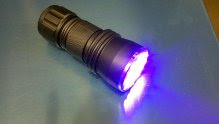
Photo by Paul Liedl
This is the new observation hive located at Warner Nature Center, Marine MN
The hive has a exit tube to get outside. The plastic covered box on the side has an entrance feeder and a spot for the bees to get pollen substitute. All the frames have to be drawn out, so there is some work for the bees to do. The hive can be taken outside to remove bees. Most observation hives get overpopulated with bees. Removing a frame of brood is the easiest way to keep the numbers down before they hatch. Visitors to the nature center are in for a treat with this very nice observation hive. Paul will populate the hive in late April.
The hive has a exit tube to get outside. The plastic covered box on the side has an entrance feeder and a spot for the bees to get pollen substitute. All the frames have to be drawn out, so there is some work for the bees to do. The hive can be taken outside to remove bees. Most observation hives get overpopulated with bees. Removing a frame of brood is the easiest way to keep the numbers down before they hatch. Visitors to the nature center are in for a treat with this very nice observation hive. Paul will populate the hive in late April.



